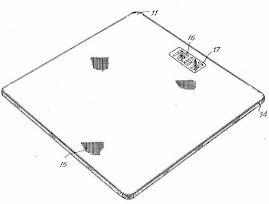There are various classifications of weighing scales in the Philippines. Some are categorized according to function, capacity, industry, etc. In this article, we look at weighing scales in the Philippines classified according to their core design.
STRAIN GAGE LOAD CELLS
How does it work?
Strain gages are made from flat foil material shaped into a long serpentine path then bonded to a spring element called a load cell. Four of these form a Wheatstone’s bridge which works like an electrical circuit; it measures electrical resistance and consequently converts it into a voltage output. This voltage output gets passed through an ADC (analog digital converter) as a digital signal which shows on the scale’s display as the weight of the object.
What are its advantages?
The strain gage load cell weighing scale banks on its design simplicity. They are easy to construct and maintain. They also have relatively good reliability in terms of accurate readings. Because of these factors, its design became industry standard over the last half a century.
What are its disadvantages?
The strain gage scale’s resolution is dependent on its capacity. For this reason, higher capacity strain gage weighing scales are not as accurate as lower capacity ones. There are various facets of the design that contribute to potential measurement inaccuracies such as ADC transmission, fluctuating temperatures, and load cell limitations.
FORCE MOTOR SCALES
How does it work?
Force motor scales use a simple lever and fulcrum design. On one end of the lever is the weighing platform and on the other end is a force coil suspended in a magnetic field. Force motor weighing scales in the Philippines use an electromagnet to support the platform’s weight and anything on it. The amount of electrical current required to keep the platform balanced determines the weight reading.
What are its advantages?
Force motor weighing scales in the Philippines utilize magnetic force restoration (MFR) hence they produce more accurate results compared to strain gage scales. They also have higher resolution compared to strain gage scales.
What are its disadvantages?
SAW (SURFACE ACOUSTIC WAVE) TECHNOLOGY
How does it work?
Surface Acoustic Wave technology uses two transducers (transmitter and reducer) attached to opposing sides of a load cell’s spring element. A continuous process happens with the receiver detecting the SAW wave, amplifying it, and sending it back to the transmitter. The frequency of this wave is dependent on the distance between the two transducers. This distance increases and affects the wave frequency once an object is placed on the platform. The digital measurement of this frequency determines the object’s weight reading.
What are its advantages?
Weighing scales in the Philippines that use SAW technology have high capacities and resolutions as fine as .0001 pound. They produce the most accurate readings compared to strain gage and force motor scales. They are also more stable, sustainable, and affordable than force motor scales.
What are its disadvantages?
Honestly there isn’t one listed yet, so if you are buying weighing scales in the Philippines, better opt for one that uses SAW technology.
STRAIN GAGE LOAD CELLS
How does it work?
Strain gages are made from flat foil material shaped into a long serpentine path then bonded to a spring element called a load cell. Four of these form a Wheatstone’s bridge which works like an electrical circuit; it measures electrical resistance and consequently converts it into a voltage output. This voltage output gets passed through an ADC (analog digital converter) as a digital signal which shows on the scale’s display as the weight of the object.
The strain gage load cell weighing scale banks on its design simplicity. They are easy to construct and maintain. They also have relatively good reliability in terms of accurate readings. Because of these factors, its design became industry standard over the last half a century.
What are its disadvantages?
The strain gage scale’s resolution is dependent on its capacity. For this reason, higher capacity strain gage weighing scales are not as accurate as lower capacity ones. There are various facets of the design that contribute to potential measurement inaccuracies such as ADC transmission, fluctuating temperatures, and load cell limitations.
FORCE MOTOR SCALES
Force motor scales use a simple lever and fulcrum design. On one end of the lever is the weighing platform and on the other end is a force coil suspended in a magnetic field. Force motor weighing scales in the Philippines use an electromagnet to support the platform’s weight and anything on it. The amount of electrical current required to keep the platform balanced determines the weight reading.
What are its advantages?
Force motor weighing scales in the Philippines utilize magnetic force restoration (MFR) hence they produce more accurate results compared to strain gage scales. They also have higher resolution compared to strain gage scales.
What are its disadvantages?
Accuracy issues found on force motor weighing scales in the Philippines were brought about by temperature and air currents. They are also too costly to operate and maintain.
SAW (SURFACE ACOUSTIC WAVE) TECHNOLOGY
How does it work?
Surface Acoustic Wave technology uses two transducers (transmitter and reducer) attached to opposing sides of a load cell’s spring element. A continuous process happens with the receiver detecting the SAW wave, amplifying it, and sending it back to the transmitter. The frequency of this wave is dependent on the distance between the two transducers. This distance increases and affects the wave frequency once an object is placed on the platform. The digital measurement of this frequency determines the object’s weight reading.
What are its advantages?
Weighing scales in the Philippines that use SAW technology have high capacities and resolutions as fine as .0001 pound. They produce the most accurate readings compared to strain gage and force motor scales. They are also more stable, sustainable, and affordable than force motor scales.
What are its disadvantages?
Honestly there isn’t one listed yet, so if you are buying weighing scales in the Philippines, better opt for one that uses SAW technology.



Comments
Post a Comment